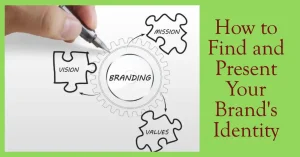The project management process is a key part of any business that deals with multiple projects at once. Digital agencies are one example, as they often have to juggle the needs and demands of their clients with the varied tasks involved in digital marketing. This guide will provide an overview of how to create a strong project management system for your agency and make sure you can meet deadlines and deliver quality work every time.
Key Principles of Project Management for Digital Agencies.
Project management is a critical skill for any digital agency. By implementing the key project management principles, you can ensure that your projects are completed on time and within budget.
The key principles of project management are:
- Project planning: Plan your project carefully, outlining the steps needed to complete it.
- Project monitoring: Track your progress regularly and adjust as needed.
- Project control: Ensure that your project stays on track and meets the requirements of all involved parties.
The principles above are important for digital agencies and should be used by anyone who works in a collaboration environment or is part of a team. The key to utilizing these principles effectively is communication; clear and open lines of communication between all team members will help you implement them with ease.
Typical Project Workflow in a Digital Agency.
Conception and client onboarding.
Conception and client onboarding in digital agencies are essential for the business. They need to be carefully thought through, planned, and executed. Conception is about gathering information on what a project should accomplish, who it’s for, how people will use it etc.
Not only does this give you more insight into your clients’ businesses, but it also helps you refine your ideas before they’re set out in motion. It’ll help create happier customers by understanding their needs better, leading to higher conversion rates (i.e., getting that customer from point A to B).
This stage involves team members collaborating with each other – developers working side-by-side with designers or copywriters, so everyone is on the same page when it comes time to deliver results.
Content development.
The agency begins producing content for the client after establishing a strategy in the previous step. This is the longest part of any agency project. Most content projects include basic pages, such as an About page, contact information, and a service or product description.
Content development workflows are similar to website design in many ways because there is no single correct way to create digital content for websites. Content development can be divided into three stages: planning, production, and review/editing. Each stage has its workflow process with specific steps that need to be completed before moving on to the next one.
Approval process.
The client’s approval is a crucial step in your project management process. This means that they’ve signed off on all of their approvals, and you’re ready to go live.
Once the client has approved everything, it’s time to launch. If there are some things left for them to do (e.g., fill out the information about themselves), let them know this so they can schedule a day/time when they’re available to fill it out online or email you back with answers if necessary.
Launch.
Launching as a typical project workflow is taking an idea and making it into something that end-users can use. The concept behind launching, also known as “going live,” is to give your users access to the content they were not able to see before: whether this means adding pages or sections on existing sites or creating new websites for clients who want their own presence online.
Evaluation and client maintenance.
Once the project has been completed, it is time to evaluate the work done. The client will be asked for feedback on what they like about the final product and any areas of concern or improvement.
It is important that this process also includes an opportunity for you to establish additional services your agency can provide to ensure the long-term success of their digital presence (for example, SEO optimization).
Once all evaluations have taken place, depending on how well everything went, you may want to consider pitching enhancements/support packages that would fit into your standard agreement or even create a new one where some elements could be added as add-ons at extra cost. This allows both parties to get back some value from the project while still leaving room for future business together.
It’s always a good idea to have some ongoing relationship with your clients as it makes them feel valued and also allows you to spot potential issues before they become bigger headaches down the road.
How To Implement Project Management Successfully.
Improving Collaboration by Having a Centralised space.
Communication is a big issue in any organisation, especially when you have clients and subcontractors. Everyone needs to know what is going on at all times with the project status, deadlines, etc. However, it can be difficult for everyone involved to keep up-to-date if they are not informed by the main agency or the client themselves.
One way of solving this problem is having a central space where new information can always be posted. The best decision is to find a trusted agency project management software, which will make it possible. By creating this shared place that everyone knows how to access easily, all key stakeholders will immediately benefit from knowing everything about their projects.
Not only is this useful for keeping teams in the loop, but it can also be used to track progress and deadlines. Collaboration is key to success in project management, and a centralised space is one way of ensuring that happens.
Visualise Your Workflow for Easier Analysis.
The best way to successfully implement project management in your digital agency is by visualising your workflow. This will help you easily identify and analyse any bottlenecks or problems that may occur during the course of a project. There are many different ways to visualise your workflow, but here are a few tips on how to get started:
- Start by creating a flowchart that outlines the steps involved in each project stage. This can help you see where there may be some overlap or gaps in your process.
- Use mind mapping software to create diagrams of how all the different project parts fit together. This can help you spot potential conflicts or dependencies between tasks.
- Create timelines for each project and track how much time is spent on each step. This will help you better estimate how much time things will take in the future.
- Use Trello or another project management tool to keep track of your team’s progress, monitor deadlines, and easily see who has what tasks assigned to them at all times.
By visualising your workflow, you can ensure that every step of the process is running as smoothly as possible and avoid any potential disasters down the road.
Managing Client Expectations.
Managing client expectations is one of the most important aspects of project management. You need to make sure that you are setting the correct expectations from the beginning to avoid surprises down the road. This includes discussing deadlines, budget, and scope of work with your clients.
It is also important to keep communication open with your clients throughout the project. Let them know about any changes or delays, and be sure to ask for feedback along the way. This will help ensure that they are happy with the final product.
You can create a smooth and successful project management experience for both you and your clients by managing client expectations effectively.
In conclusion
The Ultimate Guide to Project Management for Digital Agencies will help you effectively manage your projects, no matter how big or small. This guide is full of tips and tricks that can be used in any industry, not just the digital one.
By understanding what makes successful project managers tick, you’ll find yourself better equipped to handle even the most complicated tasks with ease. You may have already picked up on some of these skills by using them over time- but now it’s easier than ever before, thanks to this handy guide.




